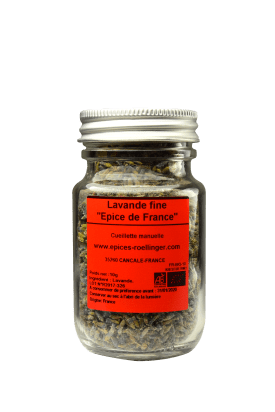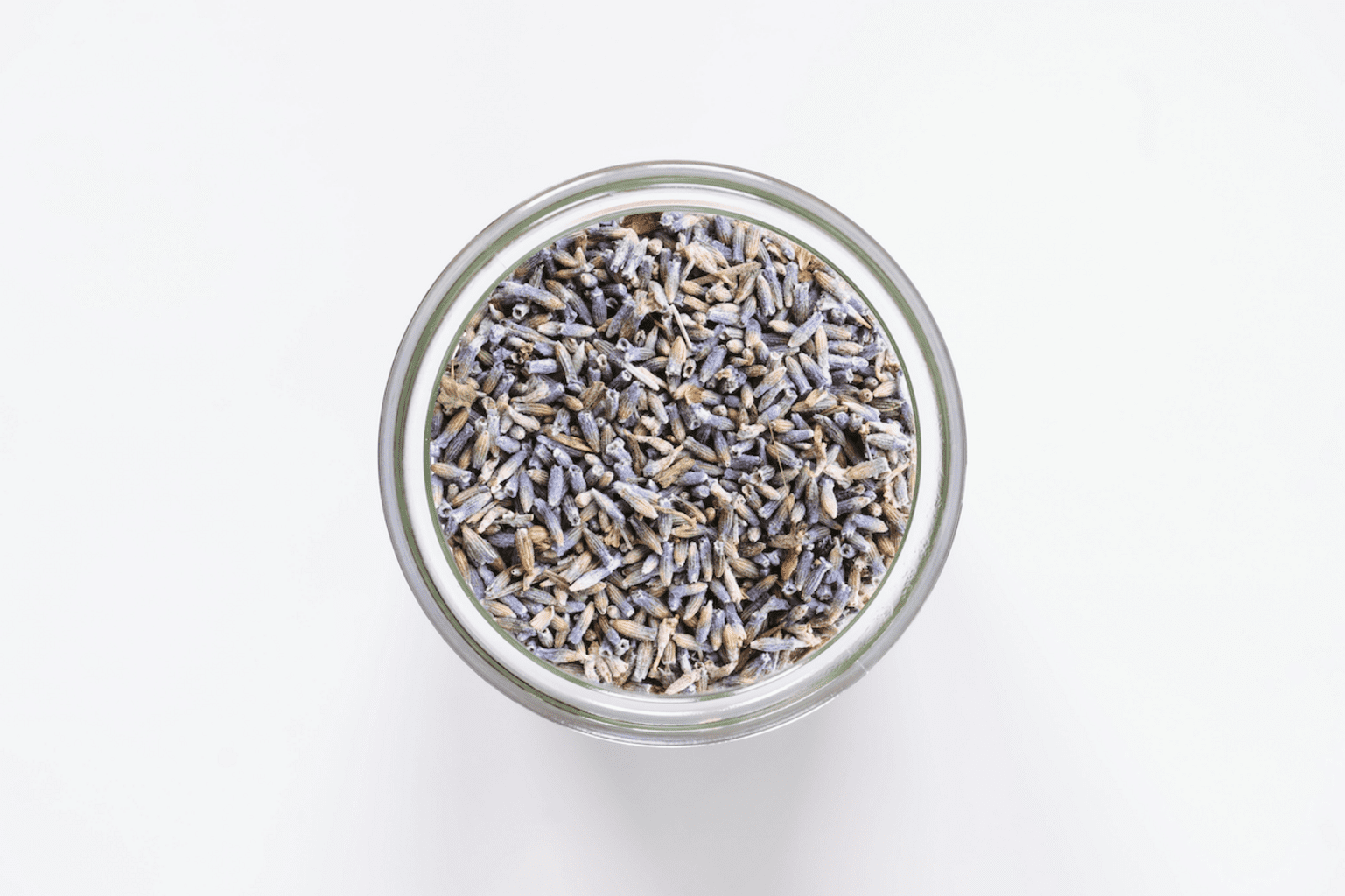Lavande fine (lavender)

Recommendations
Lavender can be brewed as an herbal tea and sweetened with a little honey.
-
Allergens
Absent, except for cross-contamination.
May contain traces of sesame, celery, mustard, soy. - Origin France
- Storage / Use In a cool, dark, dry place.
Olivier Rœllinger's words
Story
True lavender evolved from several varieties of wild lavender that grow naturally above 600 m altitude on the high plateaus in Provence. These species were progressively domesticated between the two world wars during the 20th century. True lavender is different from lavandin, a true lavender-aspic lavender hybrid, or clonal lavender which has a much higher yield. Clonal lavender makes up 80% of the lavender market today.
True lavender is rarer than the other varieties. It has a single bloom per stem and a delicate fragrance with notes of linalool and coumarin. True lavender’s color is not uniformly purple. Instead, it has variegated hues of violet-blue, navy and white.
We source our true lavender from a family of growers who have been cultivating lavender for seven generations. Today, their lavender is organically grown on the Albion plateau in Provence.
The lavender harvest begins at the end of June and reaches its peak in mid-July.
The stems are then removed so that only the lavender flower remains.
Since ancient times, true lavender has been recognized for its disinfecting, purifying, balancing and calming properties. The word ‘lavender’ comes from the Latin verb ‘lavare’ or ‘lavo’ which means to wash. It’s also the same root for the English word, ‘laundry.’
During the Middle Ages, lavender was one of the aromatic plants grown in monastic herb gardens. It was used in hospices to purify the air. French perfumers concentrated lavender production in and around the Provençal town of Grasse at the end of the 18th century. From that time on, true lavender production flourished until the 1950’s. Wild, true lavender was progressively domesticated, and its harvest mechanized between World War I and Word War II. Competition from lavandin and clonal lavender weakened the market for true lavender, but its undeniably superior quality will always ensure its cultivation and desirability.
